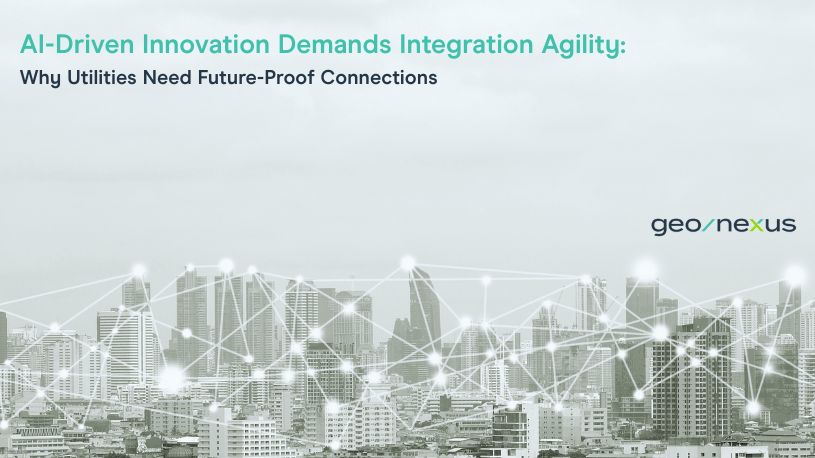
The utilities industry is on the brink of a technological revolution powered by artificial intelligence (AI). From predictive maintenance to automated inspections and smarter grid management, AI is rapidly transforming how utilities operate, manage assets, and serve customers. But as IBM, SAP, Oracle, ABB, Hexagon, and others accelerate the pace of software innovation, one challenge is becoming clear: utilities must be able to integrate new capabilities quickly—without being held back by rigid, outdated integrations.
AI is no longer a futuristic concept in utilities—it’s here, and it’s driving real change:
With AI, utilities can anticipate failures before they happen, automate routine inspections, and optimize energy flows in real time. But these benefits depend on the ability to integrate data and workflows across GIS, EAM, work management, and IoT platforms—often from multiple vendors.
As AI-driven innovation accelerates, utilities face a new integration challenge: the risk of version lock. In the past, utilities could go years between major system upgrades. Now, with AI and cloud-native platforms, IBM, SAP, Oracle, ABB, and Hexagon are releasing new features and updates several times a year. Each upgrade can bring new data models, APIs, and workflows—potentially breaking custom-coded integrations and forcing costly, time-consuming rebuilds.
Analysts predict that by 2026, 80% of enterprises will use AI-assisted development tools, slashing software release cycles by 40%. While these advancements unlock powerful new functionality, they also pose a critical challenge for utilities: version lock.
Traditional integrations—often custom-coded or reliant on rigid APIs—force organizations to choose between:
The Geonexus Integration Platform (GIP) is purpose-built to avoid this trap, enabling utilities to keep pace with rapid software evolution without sacrificing stability or incurring technical debt.
Example:
A utility using SAP S/4HANA EAM and IBM Maximo 9 upgraded both systems within weeks of their 2025 releases. With Geonexus, they maintained uninterrupted data flows between platforms—no code changes required—and immediately leveraged Maximo’s new GenAI failure analysis tools.
AI’s promise can only be realized if utilities can integrate new capabilities quickly and reliably. Integration agility means:
The Geonexus Integration Platform (GIP) is built for this new era of AI-driven utility operations. Here’s how Geonexus empowers utilities to keep pace with innovation:
With Geonexus, utilities can upgrade IBM Maximo, SAP, Oracle, ABB, or Hexagon systems as soon as new AI-driven features are released—without worrying about breaking integrations or disrupting operations.
AI is transforming utilities, but only those with agile, future-proof integrations will fully realize its benefits. As software vendors accelerate release cycles and embed AI deeper into their platforms, the ability to connect, upgrade, and innovate—without being held back by integration bottlenecks—will define the industry’s leaders.
Geonexus stands ready to help utilities unlock the full power of AI-driven innovation with seamless, near real-time integration across all major work and asset management platforms.